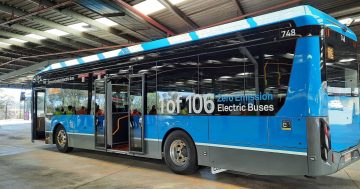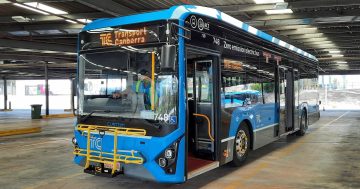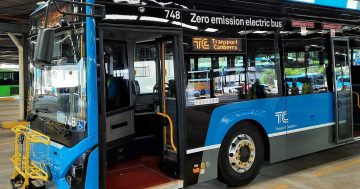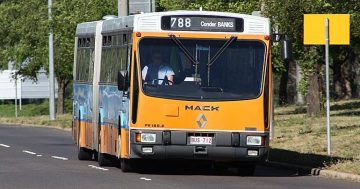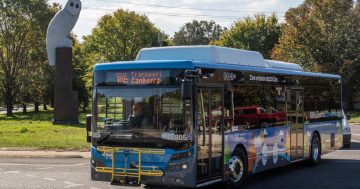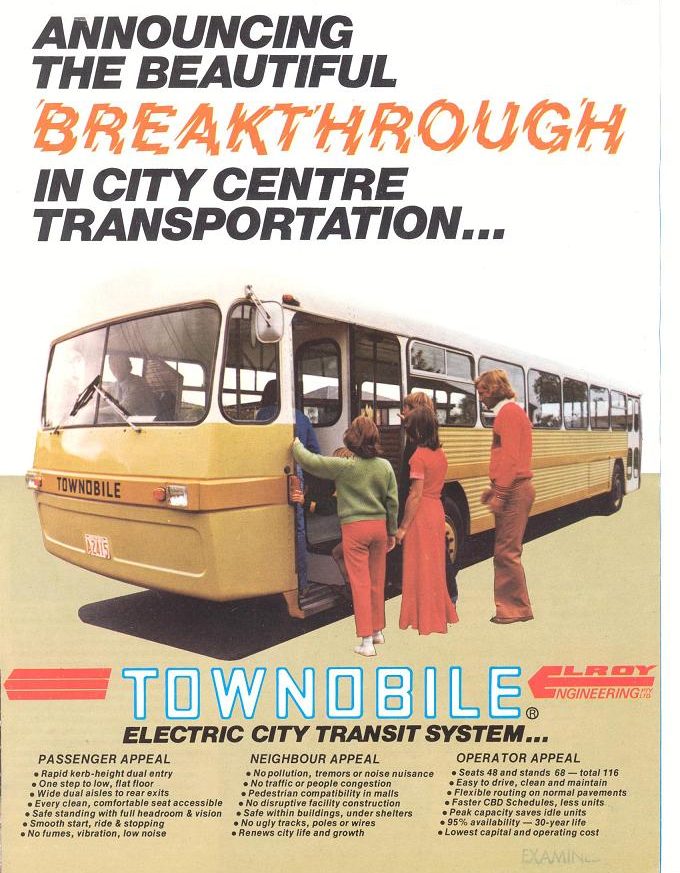
Funny they didn’t mention the three-hour battery life. Photo: ArchivesACT.
Canberra Liberals transport spokesfolk Mark Parton has pointed out wrapping an electric bus with the message “One of 106 zero-emission electric buses” when there are, in fact, only 12 actually on the roads, isn’t quite the truth, the whole truth and nothing but the truth.
The ACT Government has responded to accusations that it’s deliberately misleading the public and has argued that the 106 buses have been secured – they’ve just yet to arrive.
“The 106 buses is still a commitment – that hasn’t changed,” then-Acting Transport Minister Tara Cheyne said last month when there were accusations of ‘ghost buses’.
“Yes, the delivery [timeframe] has changed – that is frustrating, we’re all frustrated – but it doesn’t mean that we’re not going to do it,”
But while we wait for the delivery timeframe to catch up and the ghost buses to arrive, it turns out we prepared one earlier.
The Townobile was an all-electric bus that arrived in Canberra on 4 November 1977 to demonstrate “the beautiful breakthrough in city centre transportation”.
“Townobile has no throbbing, vibrating engine to start or idle,” the brochure read.
“Upon key selection of forward or reverse, it moves smoothly and precisely immediately the accelerator pedal is depressed – summer or winter, wet or fine.”

The T120 bus that visited Canberra offered room for 48 seated plus 20 standing. Photo: ArchivesACT.
It was designed by Roy Leembruggen, the man behind the famous Tulloch double-decker rail carriages used around Sydney from the mid-1960s. It was manufactured by Elroy Engineering in Hornsby in response to a request from Qantas.
The airline wanted an electric vehicle for passenger transit, but Roy went further and envisioned how an electric city transit system could “bring life back to your city”.
He designed a range of Townobile models, measuring six to 12 metres long and seating between 33 and 50 people. Standing room was said to be “twice or three times” as much as a suburban bus of similar dimensions, which helped offset the higher purchase price.
The brochure proclaimed, “One Australian Government transport body has calculated the Townobile system, with a minimum fleet of 10 vehicles, costs 66 per cent as much to own and operate per annum as an equivalent fleet of diesel buses.”
Under the planned system, diesel buses would continue to run longer suburban routes while the Townobiles would take care of a CBD-only route, much like the shuttle buses that Member for Canberra Alicia Payne wants to see run between our national institutions, for instance.
“The Townobile system enables commuters in all weathers to conveniently compete the modal journey without frustration,” the brochure went on.
“It renews life and growth in today’s suffocating, stagnating city centres.”
The bus went on to visit Brisbane in January 1978 and is believed to have run a free service in Central Sydney during the 1970s. But there were drawbacks.
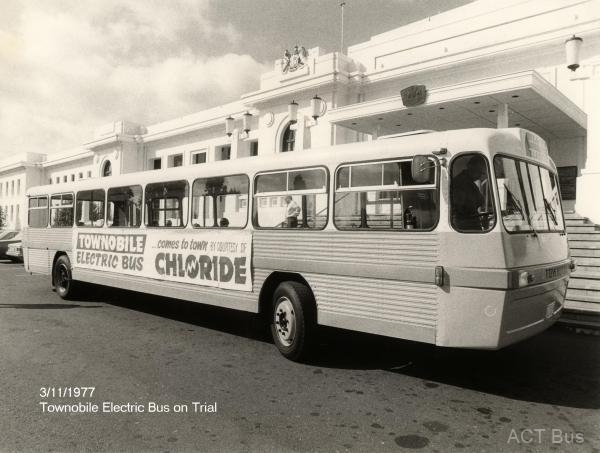
The Townobile outside Old Parliament House. Photo: ACT Bus.
The Townobile might have weighed two tonnes less than conventional buses due to its lack of engine, gearbox, and other oily bits, but the lead-acid battery packs had to be changed out every three to four hours. And the top speed was a meagre 60 km/h.
The Department of the Capital Territory, which managed the ACT between 1972 and 1983, ultimately ruled it out.
In a report on the Canberra trial, it wrote: “It is difficult to see a role for the battery-powered vehicle in Canberra, given the limited range and speed of the current electric vehicles and the fact that Canberra has extremely low population densities and decentralised shopping and business districts”.
As proof of how far we’ve come, Custom Denning buses ordered for Canberra will offer 400 km of range and a five-hour charge time. When they eventually arrive.











